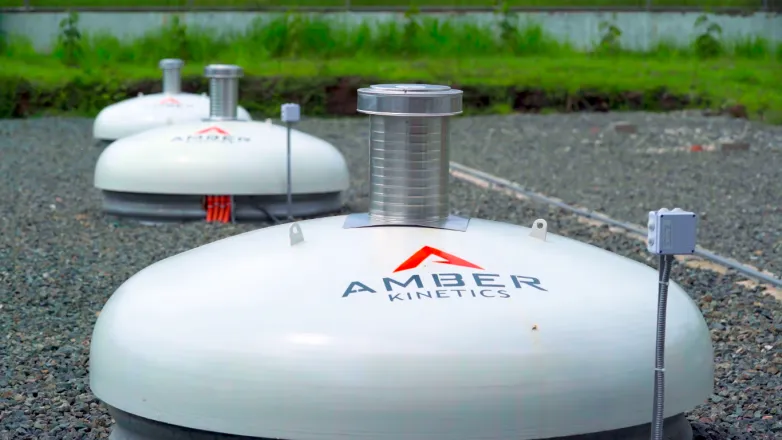Flywheel Energy Storage - Amber Kinetics has the Technology of the Future

The word revolutionary is often bandied about in the renewables sector. It’s used to describe new tech solutions that have the capacity to radically change the direction of the clean energy industry. Technologies that haven’t quite gained mainstream adoption yet. And when looking at Flywheel Energy Storage Systems (FESS) it’s hard to resist labelling them as revolutionary. Not only do they revolve quite a lot, up to 100,000 rpm, but they also possess the potential to rewire the way we store solar and wind energy.
A no-spin explanation of how flywheel energy storage systems work
Since the ancient Mesopotamians first invented pottery wheels sometime around 4000 BCE, people have been using flywheels as an energy storage system. Flywheels later played a central role in powering the steam engines that powered the Industrial Revolution. Operating via the principle of inertia, flywheels evolved during the Industrial Revolution to become heavy mechanical wheels used to store and deliver rotational energy. Energy that could be supplied to an engine when needed. Thus, a flywheel’s primary job became to store and deliver a smooth power supply to keep machinery running. Fast forward to the 1950s and a Swiss company by the name of Oerlikon began using flywheels as an energy storage system to power their buses sans the need for internal combustion engines.
Why flywheel energy storage systems are the future of renewable energy storage
Having already proven itself as a highly efficient and clean energy storage system, flywheel technology itself isn’t that revolutionary. However, it’s application within the field of renewable energy storage is. At present, lithium-ion batteries which themselves can’t be recycled and pose a real threat of fire and contamination if they burst or leak, are leading the charge in the renewable energy storage game.
But it doesn’t have to be this way.
Bob Marley once intoned “what goes around comes around". And this is a very apt expression to describe what is currently occurring with flywheel energy storage systems. After undergoing a cycle of recent radical advancements both in materials, magnetic bearing technology, and design, what was once old is new again.
Indeed, flywheels are proving a cleaner and more durable solution than the current crop of renewable energy batteries. And compared to batteries, modern flywheels, like those built by the US-based company Amber Kinetics, are built from completely recyclable steel.
Not only do flywheel energy systems have a higher capacity than lithium-ion batteries, but they are also incredibly scalable. Individual flywheels can be scaled up to tens or even hundreds of megawatts. Let’s see a normal battery do that.
Final thoughts
One day soon, hopefully, we will see a world that is 100% powered by renewable energy. But to get to that point we need to revolutionize how clean energy is stored. But not in the way of doing something new. What we need is a technology that has withstood the test of time. Flywheels are highly efficient, safe, and durable batteries capable of scaling massively as the industry evolves. What we need to create the clean future we all dream of are more of the storage solutions being engineered by Amber Kinetics.
The industry leader in manufacturing grid-scale kinetic energy storage systems (KESS), Amber Kinetics is powering the next revolution in clean energy generation and storage. And in doing so, they are delivering a safer, cheaper, and more reliable energy storage system that allows humanity to take charge of creating a clean world.
Also read

